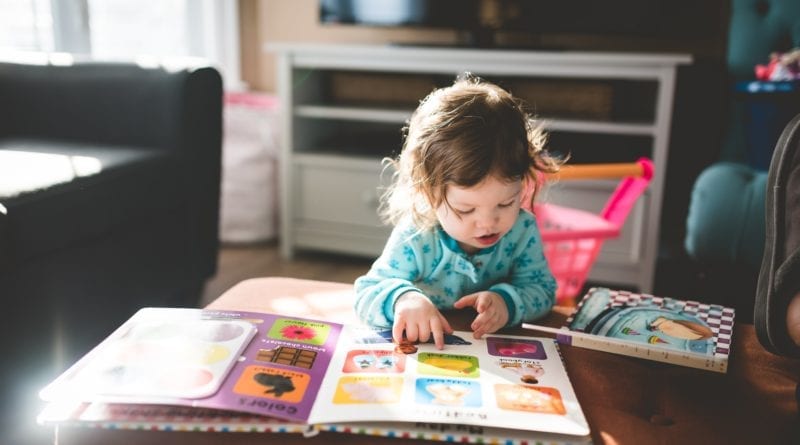Brain Development Activities For 10 Month Olds
Ten months old is an interesting age for your little one.
They are not quite the big “One” and still seem so little but they are starting to do so many things that make them look so big.
As parents, we always want to make sure that our babies are developing on track and looking for a way to help them through the process.
Looking for appropriate brain development activities for 10 month olds is not always easy.
So we make it easy for you!
Also, in just two short months your baby will be one year old! To help you preplan for their big day check out our article First Birthday Gifts (From Grandparents). It focuses on Grandparents but the ideas can also be used by anyone if you are creative.
Here are some brain Development activities for 10 month olds:
1. Parent-Baby Conversation

- Think of language skills like a garden; the more the skill is nurtured the more it grows
- After 9 months, babies can understand a few basic words like “no” and “bye-bye.”
- Read To Your Baby
- Make eye contact
- Do your best to respond, even when you don’t understand what your baby is trying to say.
- Smile often at your baby, especially when he is cooing, gurgling, or otherwise vocalizing with baby talk.
- Repeat simple words clearly throughout the day.
- Talk about what you are doing while changing their diaper, dressing them, or fixing a bottle.
2. Interactive Music
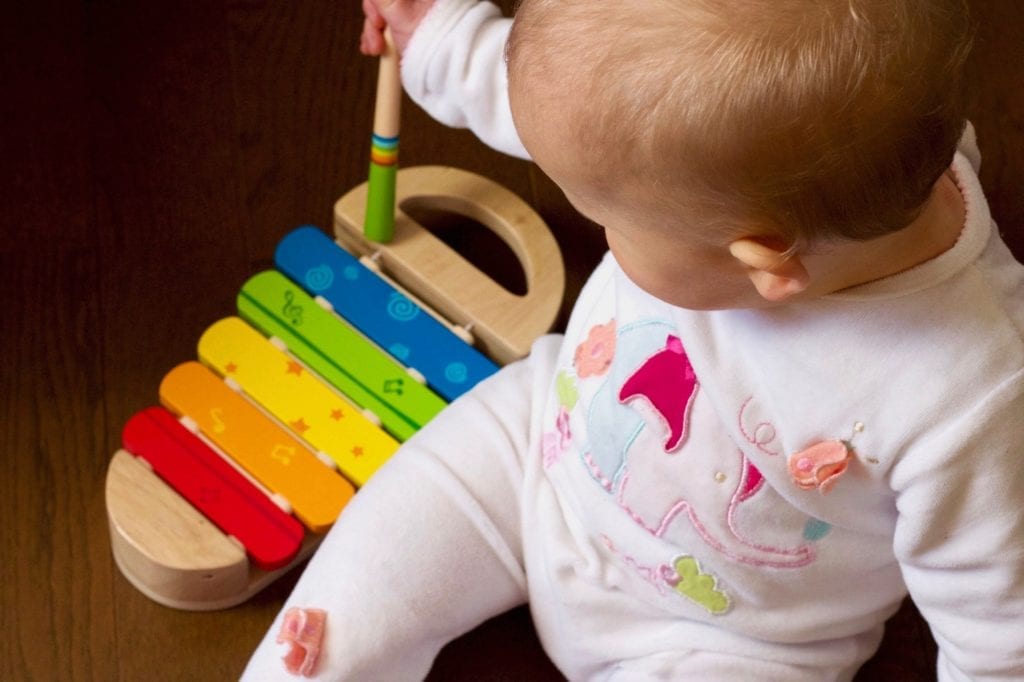
- According to the Developmental Science and Annals of the New York Academy of Sciences, babies who participate in interactive music classes with their parents smile more, communicate better and show earlier and more sophisticated brain responses to music.
- Let your child bang on pots and play with noise making instruments.
- Early music training can benefit children before they can walk and talk.
- Add interactive Lullabies to your nightly sleep routine.
- Music helps stimulate emotions which will improve the brain’s capacity for emotional intelligence.
- Play interactive nursery rhymes with movements like Itsy Bitsy Spider and Wheels On The Bus
- Before you know it, your little one will be going to Kindergarten. To make sure they are ready check out our article What Should My Child Know Before Kindergarten.
3. Peek-A-Boo
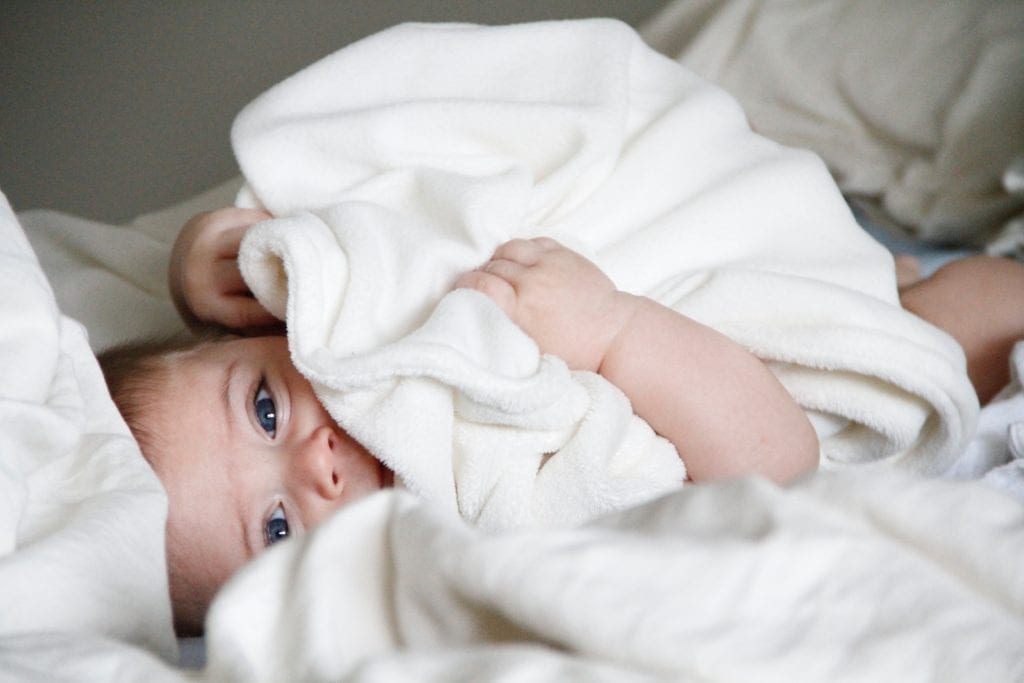
- Playing Peek-A-Boo helps babies to develop Object Permanence which is where the baby begins to understand that objects continue to exist, even when they cannot directly be seen, heard, or touched.
- When babies play Peek-A-Boo they develop brain connections that are brought together by visual stimulation.
- Peekaboo gives babies what they want more of…adult attention.
- Without interaction, some of the baby’s synapses start to diminish.
- Repetition is key for babies to learn and the repetitive nature of Peek-A-Boo is perfect for their brain development.
- “Peek a boo is all the best things. It’s mummy reappearing, but it’s also about shared communication. You can’t help but smile and laugh when a baby starts laughing with you, which is really valuable for them developing their ability to interact with other people.” says Dr. Caspar Addyman, a baby laughter researcher at Birkbeck College in London.
- Many times baby laughter is a sign that a baby wants you to continue with an activity.
4. Model One Step Commands
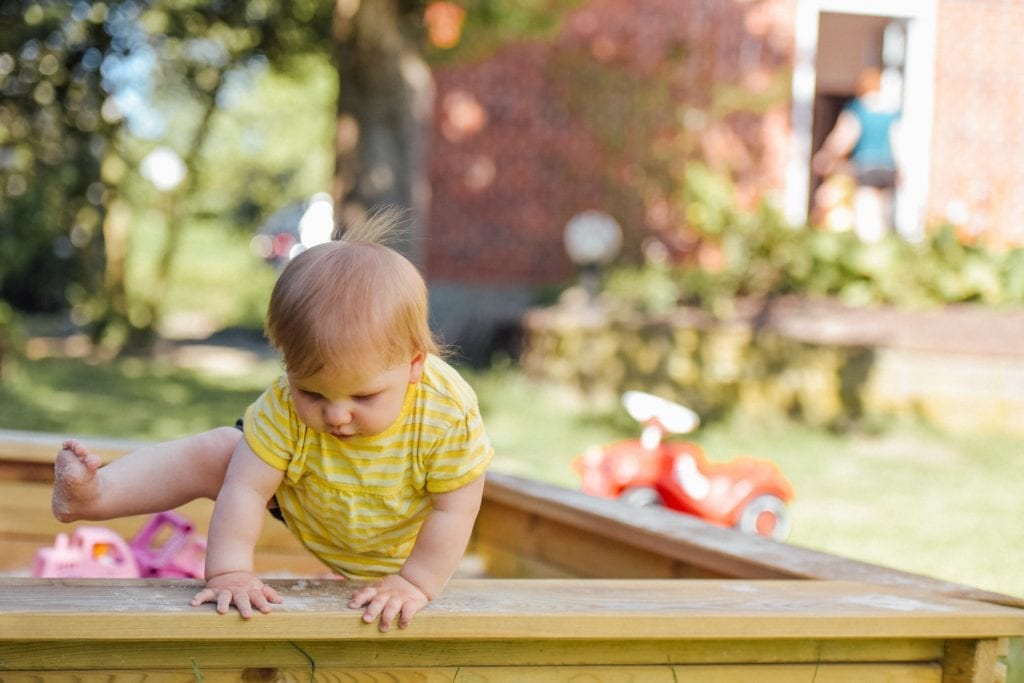
- Use clear directions with a lot of repetition.
- Point out objects and call them by name.
- Show what words mean like “stop”, “play” or “drink.”
- Give a play by play of what you are doing. Such as,” Mommy is giving you the ball.”
- Model commands over and over…especially when it comes with praise and smiles. Repetition builds understanding, no matter how boring it seems to the adult.
- Use pictures to reinforce actions and commands.
- It’s important for you to model commands because when your baby is about 12 months to 15 months old they will understand simple requests, such as “stop”, “give it to mommy”, or “come here”.
5. Make Things Colorful
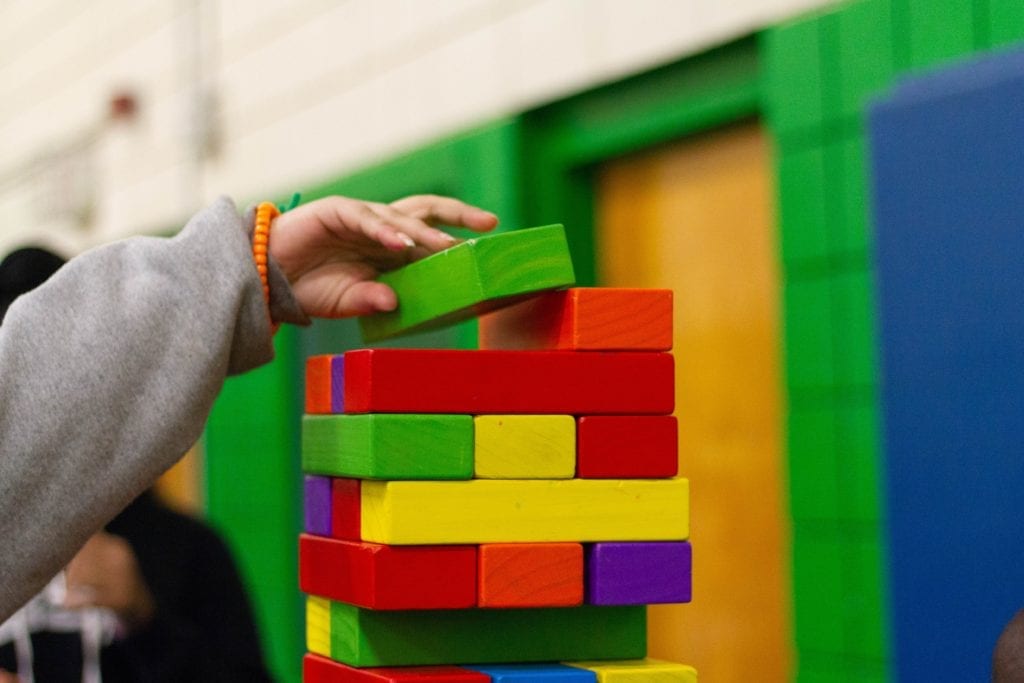
- While black and white contrasts are best for younger babies as your baby gets older a multitude of colors is what will get your babies attention.
- Around the age of 6-8 months, a baby’s color vision is well developed.
- The color red is your babies first color they see.
- Primary colors are best. Pastel colors are difficult for a baby to see.
- According to Dr. Sears, if you provide continuous visual input into baby’s eyes, the retina thrives, the optic nerve grows, and the visual part of baby’s brain thrives and develops by leaps and bounds.
- Scientific studies demonstrate that colors affect not only the outer layer of the brain but the entire central nervous system as well.
- 10 month old babies are the perfect age to introduce colorful puzzles and games that use colorful lights to help stimulate their interest.
- You can use colorful posters, wall stickers or wall art in there nurseries to help introduce colors to your baby.
- Reading books to your baby has already been shown to be extremely helpful but introducing colorful books allows you to double the brain developing stimulus.
6. Sleep

- Studies show that your baby’s brains store what has been learned during sleep.
- 10 month old babies should sleep approximately 11-12 hours a night.
- For more information on whether swaddling your baby fits into your sleep schedule check out our article Swaddling A Baby (Pros and Cons)
- During sleep brain cell connections are made. The baby’s brain neuron superhighway is being developed as they sleep.
- Create a consistent and fun sleep routine that works for your little one.
- Make their sleeping environment a cozy and comfortable one.
- Millennium Cohort Study, concluded that the first three years of life seem to be a particularly sensitive time for sleep and its relationship to brain development.
- Young children exhibit the largest amount of slow-wave or deep sleep which is correlated with brain development.
- Irregular sleep or sleeping patterns can affect a child’s brain development in the future and has been linked to ADHD and learning disabilities.
7. Crossing The Midline

- Crossing the midline is moving your hands, feet and eyes across the invisible line in the middle of the body between the right and left sides of the body.
- Crossing midline builds new pathways in the brain which are building blocks for the development of additional complex motor and cognitive skills such as reading, writing, coordination, and movement abilities.
- Crossing the midline is an activity that can develop on its own with time but helping your child practice this skill by creating crossing the middle activities will start building the brain much quicker.
- Practicing crossing the midline has been shown to help establish a dominate hand as the child gets older.
- Put stickers on one side of the body and have your child pick them off with the opposite side of the body.
- Dangle toys in front of your baby and have them try to grab them while crossing the toy from one side of the body to the other.
- Have the baby bang on an instrument with one hand and have the instrument like a drum on the other side of the body.
- Have children draw on a chalkboard from one side of the board to the other with one hand and do the same with the other hand.
- A child not being able to process activities across their midline can develop problems and delays with handwriting, motor skills, buttoning buttons and other self-care.
Please leave us a comment below!
We would love to hear how you helped or are helping your little one grow into a mini smarty pants.

